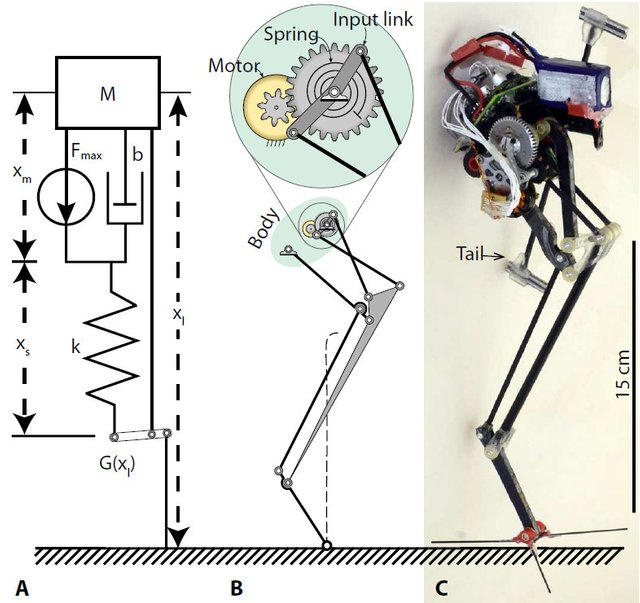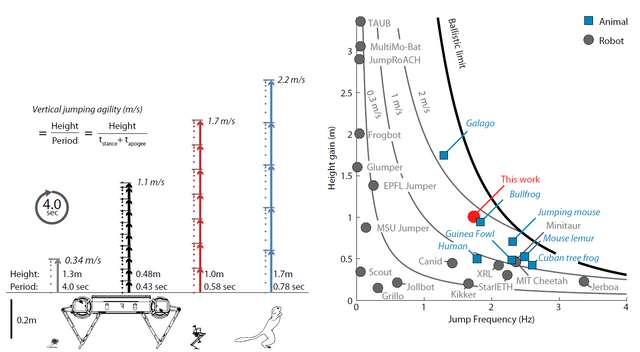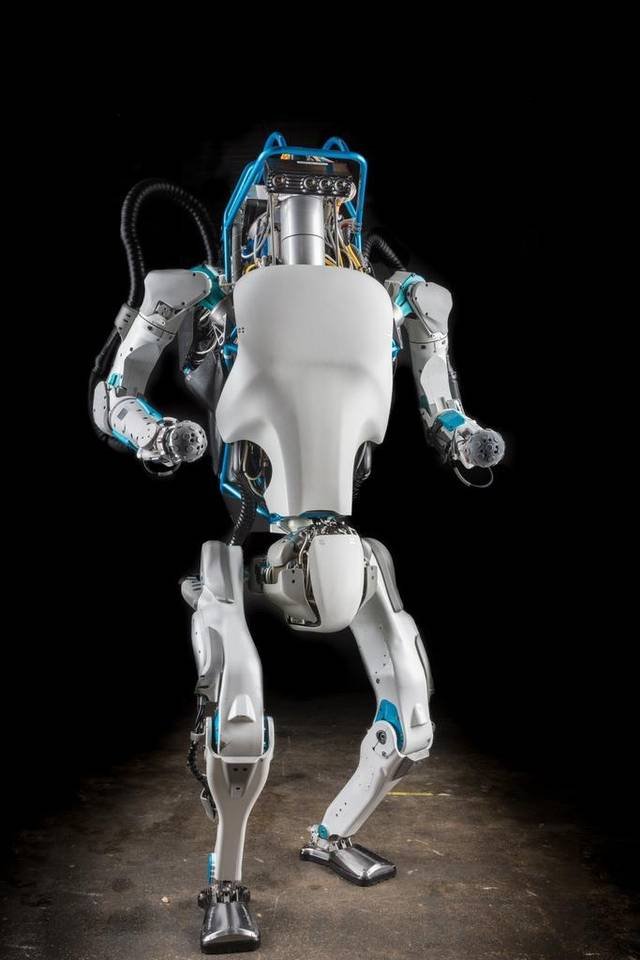Robot with a record figure of vertical jumping mastered parkour

Driving energy storage to power modulation before jumping from SALTO robot.
Engineers from the University of California at Berkeley designed a 100 gram robot SALTO (SAtatorial Locomotion on Terrain Obstacles), who overcomes obstacles multimeter, quickly jumping to a height of one meter. The main idea is that develops during the jump power exceeds the power of the robot motors. The idea of energy accumulation and release (power modulation) borrowed in the animal world, namely - in Senegal Bushbaby, a small African animal with big eyes.
Following the example of Senegal Bushbaby robot SALTO makes the number of consecutive jumps, including building on the vertical walls as in parkour. Probably, such machines will be used in the army and the Ministry of Emergency Situations.
SALTO constructing the robot, the scientists examined the animals with a maximum vertical jumping ability. In nature, there are only a few mammals that can jump to a height of more than two meters from standstill, with the possibility of immediate repetition of the jump. The champion among these animals is Galago senegalensis.

Galago senegalensis
Small mammal adapted to nocturnal life. The body length of Senegal Bushbaby from 13 to 21 cm, tail length from 20 to 30 cm. It weighs about 200 to 300 grams.
Power modulation
Senegal Bushbaby able to overcome vertical obstacles up to five meters, using a unique hopping system known in the literature on biomechanics as the power modulation or power amplification. This term means that the instantaneous power supplied by the muscle-tendon complex animal than the maximum power of his muscles. Such "spring" complexes detected in a variety of species, including chameleons, salamanders, sea needles, some mantis, and other animals.
During modulation muscle power is transmitted to the accumulation of energy in a series of elastic structures connected in series or in parallel. Then this energy is released instantaneously, so that the total return exceeds the force of the muscles alone. The robot for the accumulation of potential energy use springs or rubber bands.
The location of these elastic structures determines the order of the energy input of the drive and the method of its transformation from potential to kinetic. Engineers from the University of California at Berkeley have set the task to develop a flexible drive with a serial connection, which will show the maximum rate of vertical jumping.
Vertical jumping ability
Under the vertical jumping ability is understood as a particular height of the jump and the amount of time to prepare for the jump and flight time to the highest point. That is, the vertical jumping ability is
h / (t1 + t2)
Scientists have measured parameter is the vertical jumping from various robots and living organisms. The measurement result is shown in graphs.

On the left panel noted how high can overcome 4 seconds drives of different designs with different vertical jumping ability. For example, the parallel flexible robot EPFL Jumper 4 seconds jumping once to a height of 1.3 meters, which corresponds to the vertical jumping just 0.34 m / s. In Minitaur robot, the figure is 1.1 m / s. Finally, presented in this scientific work robot SALTO (marked in red) vertical leaping ability is equal to 1.7 m / s. Each jump a meter takes only 0.58 seconds. This means that four seconds so the robot can drop by nearly seven meters. For comparison, a living Senegal Bushbaby vertical jumping 2.2 m / s.
The right graph shows that SALTO almost perfect combination of maximum height and frequency hopping. It is due to this perfect combination, he shows a record number of vertical jumping among all the robots in the world.
The previous record for this indicator was Minitaur, much larger and looks quite clumsy robot (jumping to 48 cm for 0.43). Altitude jump record holds Israeli robot TAUB, constructed on the model of the locust. He jump height of 3.2 m.
The mechanics of a 26-centimeter-legged SALTO can try to use other robots, including robots with many legs, which are also used elastic drive with a serial connection. These are robots like StarlETH, ANYmal and ATRIAS.
And imagine that the powerful "muscle-tendon" complexes like SALTO put on a humanoid robot like Atlas? With such an enemy does not want to run into in a dark alley.

Atlas robot from Boston Dynamics
Scientific work published December 6, 2016 in the first issue of the new journal Science Robotics (doi: 10.1126 / scirobotics.aag2048). A study funded by the National Science Foundation and the US Army unit U.S. Army Research Laboratory within the Research Initiative Micro Autonomous Systems and Technology Collaborative Technology Alliance.
Referenced Materials:
- https://www.ncbi.nlm.nih.gov/pubmed/21228194
- http://www.cc.gatech.edu/fac/Chris.Atkeson/legs/jh1c.pdf
- http://www.ghostrobotics.io/minitaur/
- http://iopscience.iop.org/article/10.1088/1748-3190/10/6/066012?fromSearchPage=true
- http://mime.oregonstate.edu/research/drl/atrias/
- https://en.wikipedia.org/wiki/Atlas_(robot)
- http://robotics.sciencemag.org/content/1/1/eaag2048.abstract
- http://www.arl.army.mil/www/default.cfm/default.cfm?article=2485